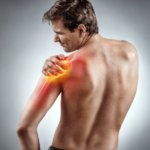
We have an unfortunate tendency to think of a lot of health problems in a binary fashion – as being ‘either-or’ affairs. Either we have them, or we don’t!
In reality, this often isn’t how it works at all. Rather, we might be better served thinking of a lot of health problems as being spectrums. We are diagnosed as having a condition only once we reach a certain point on a sliding scale and thus meet the diagnostic criteria.
A good example of this is cancer – it’s actually thought that we might all have cancer to some degree, but that this cancer is kept in check for most of us. It becomes a problem only once the damaged cells start multiplying faster than they can be destroyed.
The same thing goes for heart attacks and strokes. You’ve probably heard of a mild myocardial event – meaning a ‘mini heart attack’ that might go completely unnoticed but which can be picked up later in scans thanks to scar tissue!
Stokes is less well known though. It’s also possible that we might experience a mini-stroke that lasts for just a few minutes, or maybe an hour. This can again go unnoticed, or it can leave permanent symptoms. Either way, this post will help you to become more familiar with the concept of a ‘mini-stroke’ so that you can correctly identify them if you experience them.
1. Numbness in the Limbs
Technically, a mini-stroke is known as a transient ischemic attack – and the symptoms are essentially the same as they are for a ‘full stroke’ but just to a larger degree. So, one of the things you’re probably most familiar with is that the arm can go numb. This can also occur in the leg or the face and it will generally affect one side of the body the most.
The thing to understand about a stroke is that it is essentially caused by damage being inflicted on specific part of the brain – particular neuronal clusters. These neurons all have different jobs and so the area that is being damaged is going to dictate the kinds of symptoms that are exhibited.
In this case, you are likely experiencing numbness in the limbs due to damage to the neurons that represent that side of the body or that limb specifically.


